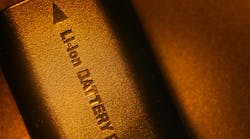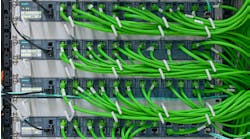By Sol Jacobs, VP and General Manager, Tadiran Batteries
Extended-life batteries are essential to remote wireless devices utilized throughout the IIoT, providing a major cost benefit by reducing or eliminating the need for battery replacements. Use of an ultra-long-life battery can translate into significant cost savings for remote wireless applications by eliminating the labor expenses related to battery replacement, which invariably exceeds the cost of the battery itself. This money-saving benefit is especially important for wireless devices deployed in remote or hostile locations where battery access can be highly cost-prohibitive and sometimes impossible.
The use of battery-powered remote wireless devices has exploded to encompass everything from system control and data automation (SCADA) to automated process control, AI on the edge, M2M, machine learning, and other technologies. Battery-powered devices monitor everything from structural stress to environmental quality, tank level and flow monitoring, energy usage, asset tracking, as well as enabling remote actuation and shut-off using two-way wireless communications.
Ultra-long-life lithium batteries are serving to increase system reliability, ensure continuous data flow, and reduce long-term maintenance costs, support AI-enabled predictive maintenance programs, and more.
Low-power applications require primary batteries
There are two types of low-power devices. The vast majority operate in a “stand-by” state, drawing average current measurable in micro-amps with pulses in the multi-amp range to power two-way wireless communications. These applications generally rely upon industrial-grade primary (non-rechargeable) lithium batteries, especially when battery access is limited. If the battery is easily accessible for replacement and operates within a moderate temperature range, then consumer-grade batteries could be considered as an economical solution.
There are also certain niche applications that draw average energy measurable in milli-amps with pulses in the multi-amp range, consuming enough average energy to limit the operating life of a primary battery. These higher drain applications may require the use of an energy-harvesting device in conjunction with a rechargeable lithium-ion (Li-ion) battery to store the harvested energy. Industrial grade Li-ion batteries are now available that enable maintenance-free operation for up to 20 years.
Numerous types of primary (non-rechargeable) chemistries are available, each offering unique performance benefits and trade-offs. These chemistries include alkaline, iron disulfate (LiFeS2), lithium manganese dioxide (LiMnO2), lithium thionyl chloride (LiSOCl2), and lithium metal-oxide.
Among these primary chemistries, bobbin-type LiSOCl2 is overwhelmingly preferred for long-term deployments in remote locations due to their higher capacity and energy density, wider temperature range, and incredibly low annual self-discharge rate of less than 1% per year for certain cells.
The importance of low self-discharge
IIoT-connected devices utilize two-way wireless communications, which demands specialized power-management solutions. These devices must be engineered to conserve energy by employing a variety of energy-saving techniques, including the use of a low-power communications protocol (WirelessHART, ZigBee, LoRa, etc.), low-power chipsets, and proprietary techniques designed to minimize energy consumption when the device is in “active” mode. While extremely useful, these energy-saving techniques are usually dwarfed by the energy losses associated with annual self-discharge.
Self-discharge is common to all batteries as chemical reactions occur even when a cell is disconnected or in storage. The annual self-discharge rate of a battery can vary considerably based on chemistry and design of the cell, its current discharge potential, the quality of the raw materials, and, most importantly, the passivation effect.
Unique to liSOCl2 batteries, passivation involves a thin film of lithium chloride (LiCl) that forms on the surface of the lithium anode to limit reactivity while not in use. LiSOCl2 cells can be constructed two ways: bobbin-type cells feature less active surface area, which is ideal for harnessing the passivation effect. However, the trade-off is an inability to deliver high-rate energy. LiSOCl2 batteries can also be made with spiral-wound construction, which permits greater energy flow, with the trade-off being shorter operating life due to higher self-discharge.
Whenever a load is placed on the cell, the passivation layer causes initial high resistance and a temporary dip in voltage until the discharge reaction begins to dissipate the LiCl layer: a process that keeps repeating each time the load is removed.
The ability of a cell to harness the passivation effect can be influenced by the cell’s current capacity; length of storage; storage temperature; discharge temperature; and prior discharge conditions, as removing the load from a partially discharged cell increases the level of passivation relative to when it was new. Experienced battery manufacturers can optimize the passivation effect by using higher-quality raw materials and employing proprietary techniques to manufacture the cell.
While passivation can be highly beneficial to reducing the annual self-discharge rate, this process needs to be carefully harnessed to avoid over-restricting energy flow.
The challenges of powering two-way wireless communications
While standard bobbin-type LiSOCl2 cells are ideal for harnessing the passivation effect, they are unable to generate the high pulses required for two-way wireless communications due to their low-rate design. This challenge can be overcome with a hybrid solution where the standard bobbin-type LiSOCl2 cell delivers low-level background current, which is augmented by a hybrid-layer capacitor (HLC) that stores and delivers periodic high pulses.
This hybrid solution can be preferable to the use of supercapacitors, which are generally limited to consumer applications due to various performance limitations. Supercapacitors store and deliver high pulses electrostatically rather than chemically. However, supercapacitors suffer from inherent drawbacks such as short-duration power, linear discharge qualities that prevent use of all the available energy, low capacity, low energy density, and high annual self-discharge rates (up to 60% per year). Supercapacitors linked in series also require the use of cell-balancing circuits, which adds to their cost and bulkiness and consumes more energy to further accelerate their self-discharge rate.
Let the buyer beware
Major differences can exist between seemingly identical bobbin-type LiSOCl2 cells. For example, a superior quality bobbin-type LiSOCl2 battery can feature a self-discharge rate as low as 0.7% per year, versus an inferior-quality cell with a higher self-discharge rate of up to 3% per year, losing 30% of its capacity every 10 years to make 40-year battery life unachievable. By contrast, the higher-quality cell can retain more than 70% of its original capacity even after 40 years.
Choosing the ideal battery can be a difficult in part because the affects of higher self-discharge can take years to emerge and the predictive models used to estimate expected battery life typically underestimate the passivation effect as well as long-term exposure to extreme temperatures. Various testing procedures are available to better approximate expected battery life, with the best source of data being historical test data taken from cells being used in the field.
When extended battery life is essential to maximizing your return on investment (ROI), it pays to perform added due diligence by demanding fully documented long-term test results along with historical in-field test data involving comparable devices under similar loads and environmental conditions.
By paying more attention when evaluating competing batteries, you can achieve significant long-term savings while increasing the reliability of your remote wireless devices.


